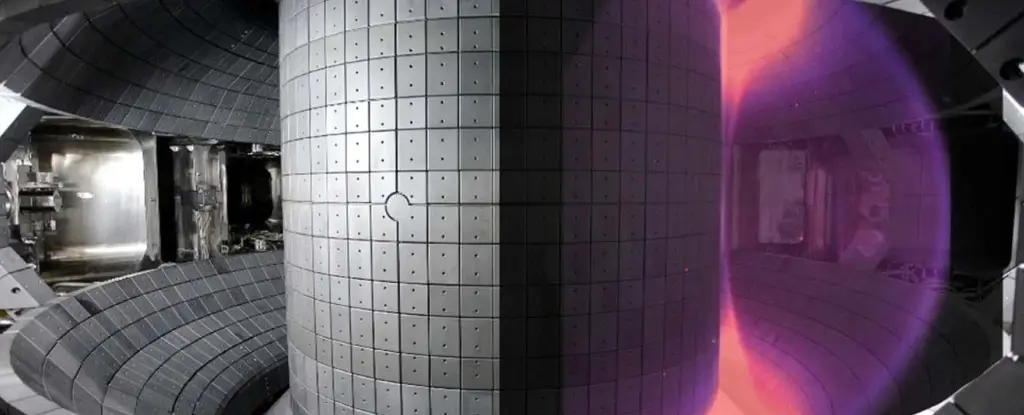Fusion energy, the process that powers the sun and stars, has long been touted as the holy grail of clean, abundant, and sustainable energy sources. The potential for harnessing the vast energy locked within atomic nuclei through fusion has captured the imagination of scientists, engineers, and policymakers alike. This article will discuss the potential of fusion energy, the progress made in fusion research, and the challenges that still lie ahead in the quest to bring this revolutionary energy source to fruition.
Understanding Fusion
Fusion occurs when two atomic nuclei come together to form a heavier nucleus, releasing a tremendous amount of energy in the process. The most common fusion reaction involves combining isotopes of hydrogen – deuterium and tritium – to produce helium and a neutron, with a large amount of energy released as a byproduct.
The appeal of fusion lies in its potential to provide clean, practically limitless energy. The fuel for fusion – deuterium and tritium – can be extracted from seawater, an abundant and easily accessible resource. Additionally, fusion produces no greenhouse gases or long-lived radioactive waste, making it an environmentally friendly option.
Progress in Fusion Research
Magnetic Confinement
The most advanced fusion research method is magnetic confinement, which uses magnetic fields to confine and control the plasma in which fusion occurs. The most prominent magnetic confinement devices are tokamaks and stellarators. The International Thermonuclear Experimental Reactor (ITER) project, currently under construction in France, is a large-scale tokamak that aims to demonstrate the scientific and technological feasibility of fusion power.
ITER is an international collaboration involving 35 countries, including the United States, Russia, China, the European Union, India, Japan, and South Korea. The project aims to produce a sustained fusion reaction with a ten-fold energy gain – producing 500 MW of fusion power for 50 MW of input power. The ITER reactor is expected to be operational by 2025, with the first plasma experiments slated for 2026.
Inertial Confinement
Another method of achieving fusion is inertial confinement, which uses powerful lasers or ion beams to compress and heat a small pellet of fuel, inducing fusion. The National Ignition Facility (NIF) in the United States is the largest and most advanced facility dedicated to inertial confinement fusion research. In August 2021, the NIF reported a significant milestone, achieving a yield of 1.3 megajoules of energy – nearly 70% of the energy input – from a fusion experiment.
The NIF announced in early 2023 made a further announcement in their research. In the latest experiment, researchers pumped in 2.05 megajoules of laser energy and got about 3.15MJ out – a roughly 50% gain and a sign that fusion reactions in the pellet were driving further fusion reactions.
Challenges in Fusion Research
Despite the progress made in fusion research, several significant challenges remain to be overcome before fusion can become a viable energy source.
Sustained Fusion Reactions
Achieving a sustained fusion reaction, rather than just brief bursts of energy, is crucial for practical fusion power generation. While projects like ITER and NIF have made progress in generating fusion reactions, maintaining a stable plasma for a long duration remains a challenge.
Material Challenges
The extreme temperatures and pressures required for fusion pose significant material challenges. The plasma-facing components of a fusion reactor must withstand not only high heat and radiation but also bombardment by energetic particles. Developing materials that can endure these conditions while remaining cost-effective and easy to maintain is a critical area of ongoing research.
Tritium Supply
Although deuterium is abundant in seawater, tritium is a rare isotope of hydrogen. Current tritium supplies are insufficient to meet the needs of a large-scale fusion power industry. Developing efficient methods for breeding tritium within a fusion reactor, such as using lithium blankets to capture the neutrons produced during fusion, is essential to ensure a sustainable fuel supply for future fusion reactors.
Economic Viability
The high cost of developing and constructing fusion reactors, along with the complex technologies involved, presents a barrier to the widespread adoption of fusion energy. Reducing the cost of fusion power generation through innovations in materials, engineering, and reactor design will be crucial to making fusion energy economically competitive with existing energy sources.
Public Perception and Acceptance
Public perception and acceptance of fusion power can impact the speed at which it is adopted. Many people are unfamiliar with the differences between fusion and fission, the process used in nuclear power plants, leading to misconceptions about the safety and environmental impact of fusion energy. Effective communication and education about the benefits and safety of fusion will be vital in overcoming these challenges.

The Future of Fusion Energy
As research progresses and more milestones are reached, the potential for fusion to become a viable power source increases. The successful operation of ITER and continued advancements in inertial confinement fusion at the NIF could pave the way for the construction of demonstration power plants, followed by commercial fusion reactors.
The development of fusion power is not only a scientific and engineering challenge but also a global endeavor. International collaboration, such as that demonstrated by the ITER project, will be essential in driving the research and development needed to make fusion a practical and widely available energy source.
Conclusion
Fusion power holds immense promise as a clean, abundant, and sustainable energy source for the future. While significant progress has been made in fusion research, various challenges remain to be overcome. With continued investment in research, development, and international collaboration, fusion energy could revolutionize the way we power our world, reducing our reliance on fossil fuels and mitigating the impact of climate change. The pursuit of fusion is not only an investment in advanced technology but also an investment in a brighter, more sustainable future for generations to come.





